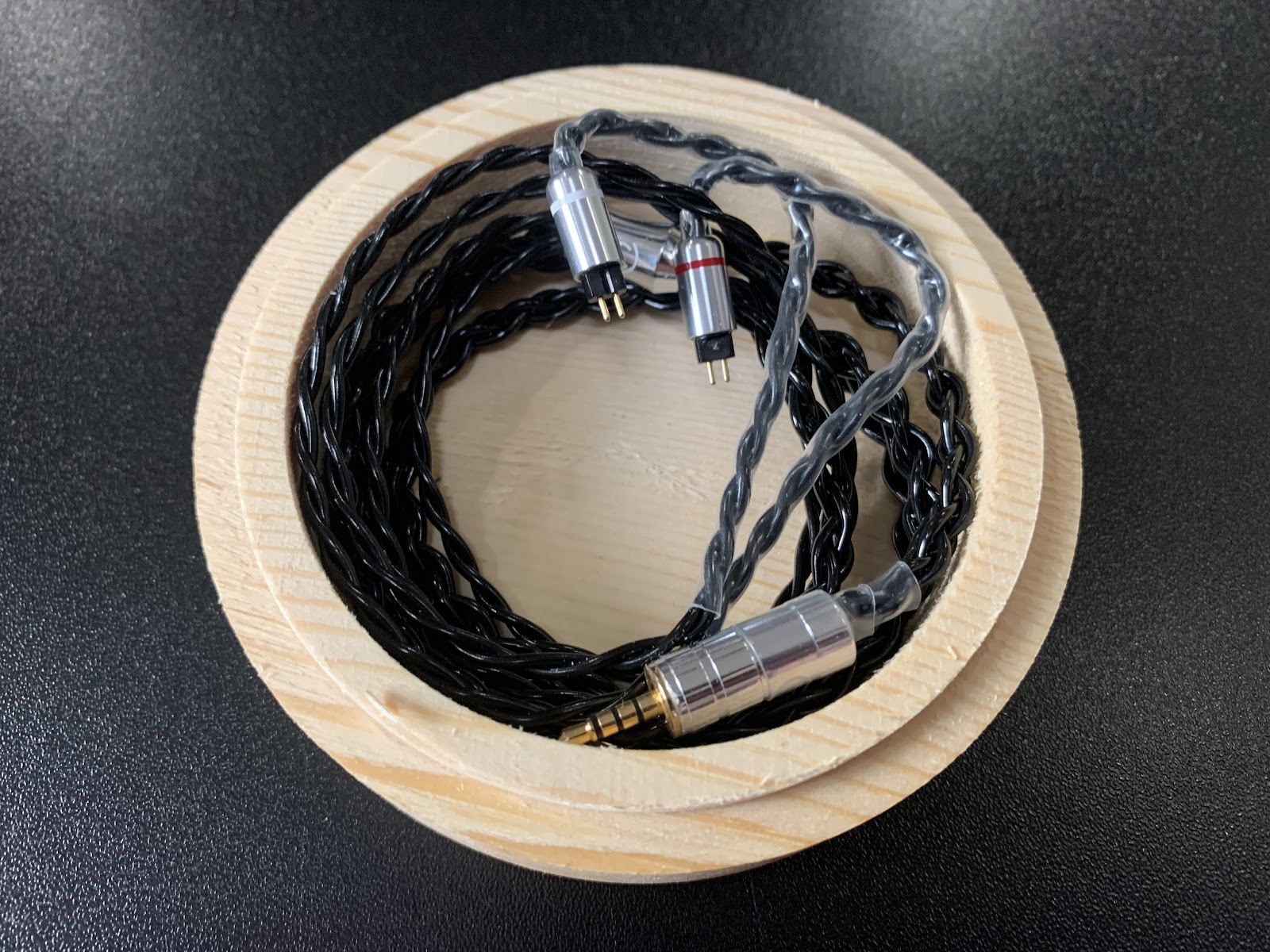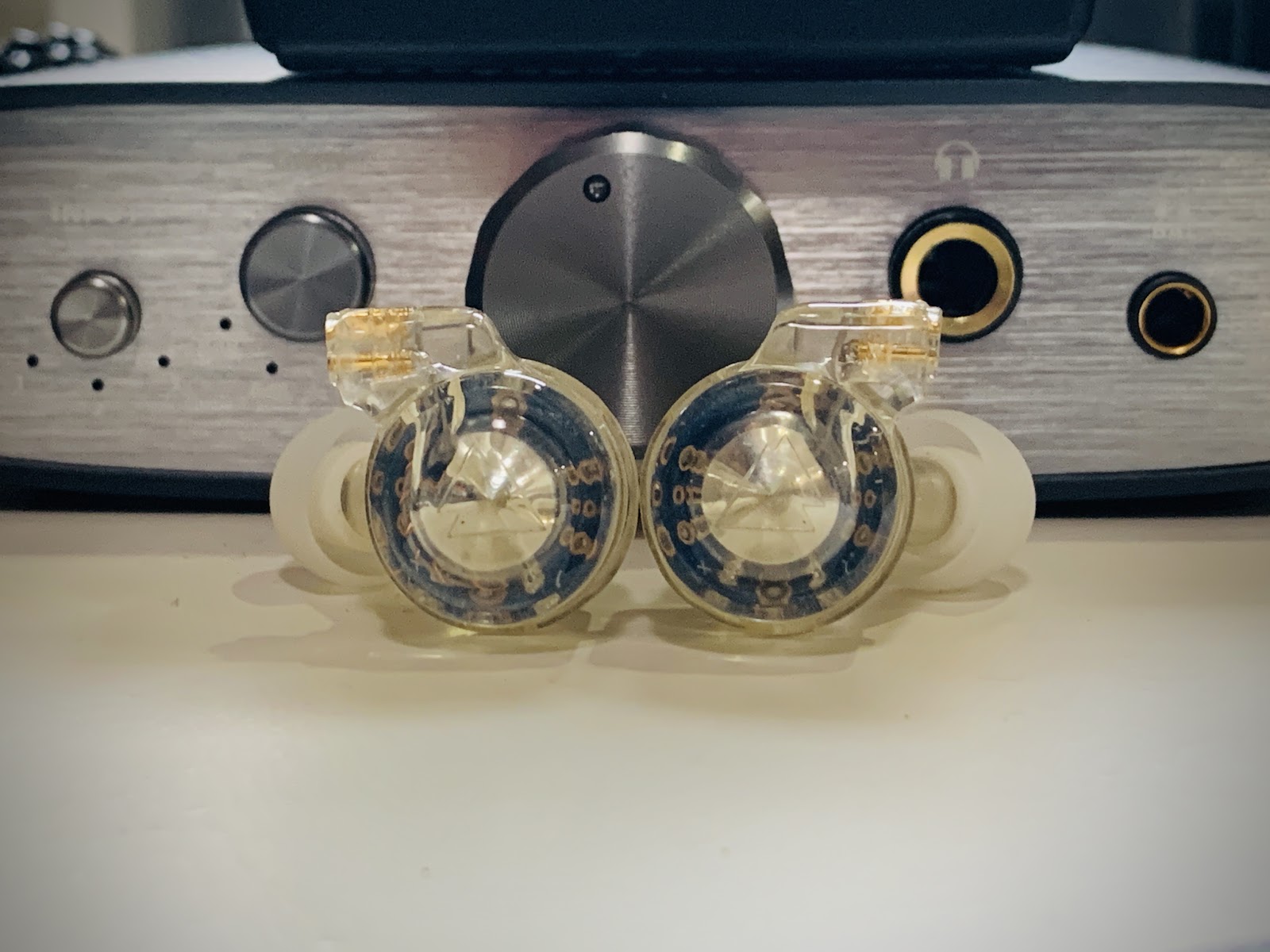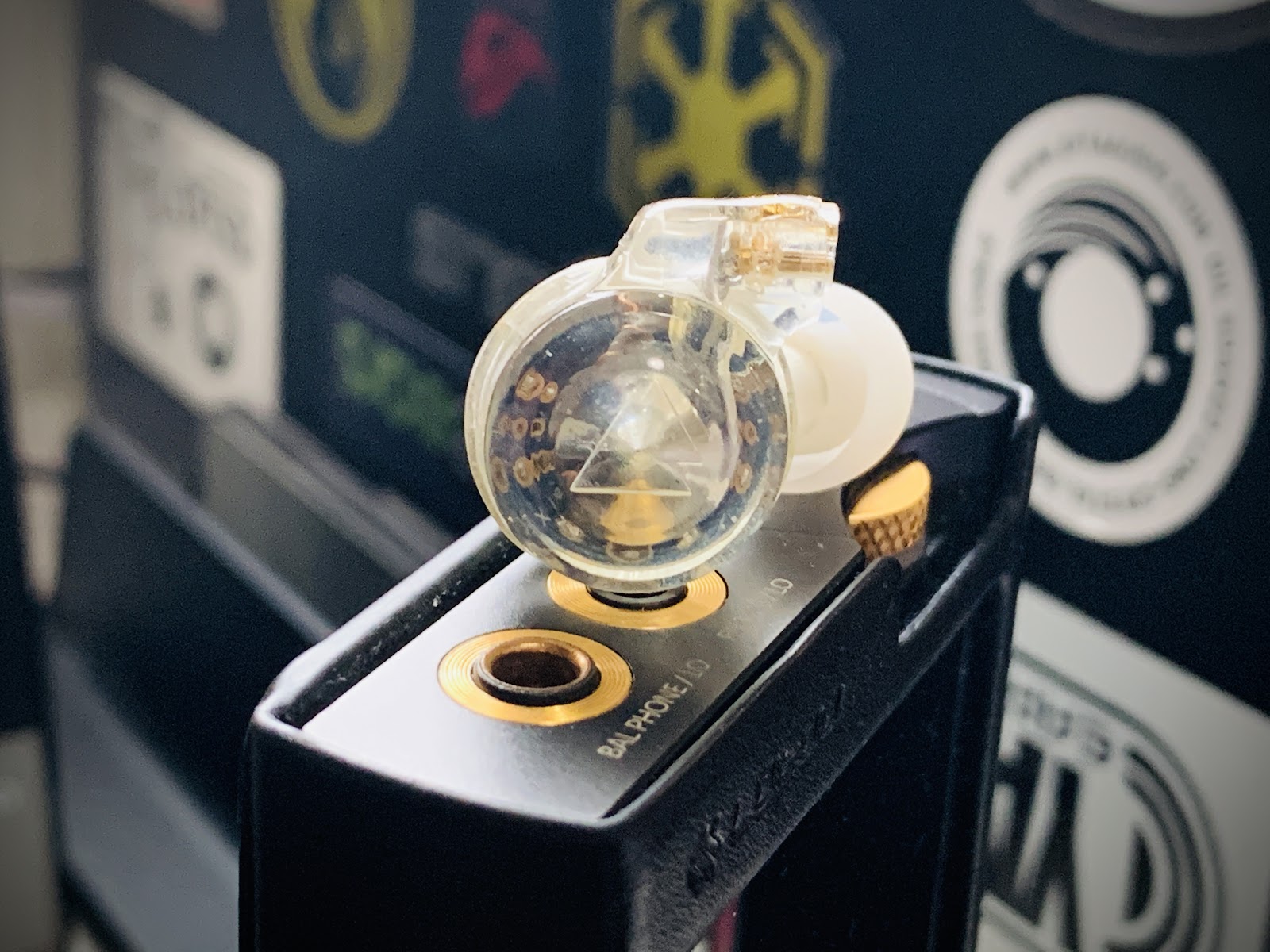You are using an out of date browser. It may not display this or other websites correctly.
You should upgrade or use an alternative browser.
You should upgrade or use an alternative browser.
PEAK Audio Origin
- Added by yong_shun
- Create date
yong_shun
1000+ Head-Fier
Pros: Neutral and balanced sound signature
Excellent cable quality
Accurate and precise bass response
Uncolored and natural midrange for vocal monitoring
Smooth and well-extended highs
Pleasant unboxing experience
Huge soundstage
Excellent cable quality
Accurate and precise bass response
Uncolored and natural midrange for vocal monitoring
Smooth and well-extended highs
Pleasant unboxing experience
Huge soundstage
Cons: Insufficient depth
Power hungry
High price
Power hungry
High price
You can see the desire to create a new “peak” in the audio industry in PEAK Audio’s courageous and ambitious release - the planar-magnetic driver powered Origin IEMs.
As a new IEM manufacturer from Hong Kong, PEAK Audio is likely a stranger to many audiophiles. I came across PEAK Audio from a Facebook page recommendation. After talking to Aaron, the founder of PEAK Audio, I decided to try the Origin.
A single planar-magnetic driver powers the Origin. Planar magnetic drivers are rare in IEM driver configuration due to space constraints and source power requirements. I know of only two brands that utilize purely planar-magnetic drivers in their IEMs - Audeze and TinHiFi. PEAK Audio is the third in the market, to the best of my knowledge.
According to Aaron, he chose planar-magnetic drivers to power the Origin for the following reasons:
Before trying the Origin, my impression towards planar-magnetic IEMs was “meh.” After trying the Audeze iSine and TinHiFi models, I concluded that they are power-hungry, and their potential is limited. I did not see any attractive selling points, except that the driver is rare.
Will the Origin change my impression towards planar-magnetic IEMs? Let’s find out in this article!


Opening the box, you find three major items: a PEAK Audio IEM stand holding the Origin, a leather carry case, and another round wooden box from CM Cable. The stock cable, the Dark from CM Cable, is stored in the round wooden box. The stock silicone ear tips are in the leather carry case.



The nozzle of Origin is on the inner acrylic piece of the shell. It is very long - longer than any other of my IEMs. There is a lip on the nozzle to retain the ear tips securely. The 0.78mm 2-pin connector is on top of the shell, secured in between 2 acrylic pieces.


As mentioned in the previous section, the stock cable is from CM Cable, a Hong Kong cable manufacturer. The Dark, the stock cable for the Origin, is the new flagship model from CM Cable. Coated with black PVC, the Dark is constructed from 28AWG Litz 7N OCC Copper with Cryo treatment. My cable is terminated with a 2.5mm TRRS balanced jack. I believe the termination can be chosen when you order the Origin.
https://lh3.googleusercontent.com/oYzuFN_IJ2M8IfAd9af_Yt0bhHjh-VRdCoKNffOo73SNfhBkoK9_qCeAtLjjMdla-_ueIf0lXFNNNq2ZQO_gCZPuCqYJflMtauS17xEH9hvUtPVHLXdIDxRbezkkip****TZdl0q


The carrying case of Origin is the right size for storage. Externally, it is padded with soft material to protect the IEMs.

Hence, to present a review of Origin’s maximum capability, I hooked it to my iFi Zen Can. All the impressions in the article were made using this setup - Lotoo PAW6000 line out to an iFi Zen Can and delivered to the PEAK Audio Origin.

Soundstage-wise, horizontal and vertical extensions are great. However, the Origin’s depth seems to be lacking, making them seem to be one step away from having a three-dimensional soundstage. I believe this could be the limitation of the planar-magnetic driver.

The sub-bass is rolled off on the Origin, which is the main culprit causing the lack of soundstage depth. The soundstage could reach perfection if the sub-bass rumble was enhanced. The mid bass is more prominent, but still with a lean body.

The Origin have good capability to handle complicated tracks with various instruments. I auditioned them with several rock albums. The Origin can present individual instruments accurately without facing any congestion. The wide soundstage provides advantages, and vocals are still the star of the stage no matter how many competing instruments are there.

The Origin can present high-frequency instruments such as cymbals and guitar pluckings in a very natural manner. They are comfortable to listen to. The notes flow gently and tickle your eardrums.

With the launch of the Origin, PEAK Audio shows the world what IEMs with a planar-magnetic driver can achieve for audiophile-grade sound reproduction. The Origin are now one of the topmost peaks for other manufacturers to try to conquer. Well done, PEAK Audio!
Thank you, Aaron, from PEAK Audio, for sending me the Origin IEMs. They were sent to me in exchange for my honest review and opinion. If you’d like to buy the Origin, you can drop Aaron a message on the PEAK Audio Facebook page.
As a new IEM manufacturer from Hong Kong, PEAK Audio is likely a stranger to many audiophiles. I came across PEAK Audio from a Facebook page recommendation. After talking to Aaron, the founder of PEAK Audio, I decided to try the Origin.
A single planar-magnetic driver powers the Origin. Planar magnetic drivers are rare in IEM driver configuration due to space constraints and source power requirements. I know of only two brands that utilize purely planar-magnetic drivers in their IEMs - Audeze and TinHiFi. PEAK Audio is the third in the market, to the best of my knowledge.
According to Aaron, he chose planar-magnetic drivers to power the Origin for the following reasons:
- Lower distortion. The signal can be delivered by Origin in the cleanest manner without any distortion.
- Stable and great extension in high frequencies, which helps to improve the overall clarity.
- Uncolored and transparent highs.
Before trying the Origin, my impression towards planar-magnetic IEMs was “meh.” After trying the Audeze iSine and TinHiFi models, I concluded that they are power-hungry, and their potential is limited. I did not see any attractive selling points, except that the driver is rare.
Will the Origin change my impression towards planar-magnetic IEMs? Let’s find out in this article!
Technical Specifications
- Form: Wired closed-back IEM
- Price: HKD6980 (~USD900)
- Driver configuration: Single planar-magnetic driver
- Impedance: 20 Ohms
- Sensitivity: 100db @ 1kHz
- Frequency response: 20Hz - 40kHz
- Cable: Dark from CM Cable - black PVC coated 28AWG Litz 7N OCC Copper with Cryo treatment.
Unboxing
The unboxing experience of the PEAK Audio Origin is absolutely luxurious. When I received the box from Aaron, I was shocked. It is huge - bigger than a lot of IEM packages in the market. The outer box of Origin is crafted with wood. This is my third pair of IEMs in a wood box; the Moondrop Blessing and Origami Audio Silver also came in wooden boxes.Opening the box, you find three major items: a PEAK Audio IEM stand holding the Origin, a leather carry case, and another round wooden box from CM Cable. The stock cable, the Dark from CM Cable, is stored in the round wooden box. The stock silicone ear tips are in the leather carry case.
This is the best unboxing experience I ever had. However, I still prefer more plain packaging - friendlier for storage, shipping fees, and the environment.
Design
When I first saw Origin’s design, it reminded me of the DUNU DK series, which has the same round housing. However, there are a lot of differences between them. The Origin’s shell is made of two pieces of transparent acrylic, which is lightweight and friendly to ears for extended listening. I particularly like the transparent design of the Origin, which lets you see the planar-magnetic driver.This design is unique to the extent that my friend spent quite a while just studying the planar-magnetic driver in the Origin. It is that attractive!
The nozzle of Origin is on the inner acrylic piece of the shell. It is very long - longer than any other of my IEMs. There is a lip on the nozzle to retain the ear tips securely. The 0.78mm 2-pin connector is on top of the shell, secured in between 2 acrylic pieces.
As mentioned in the previous section, the stock cable is from CM Cable, a Hong Kong cable manufacturer. The Dark, the stock cable for the Origin, is the new flagship model from CM Cable. Coated with black PVC, the Dark is constructed from 28AWG Litz 7N OCC Copper with Cryo treatment. My cable is terminated with a 2.5mm TRRS balanced jack. I believe the termination can be chosen when you order the Origin.
https://lh3.googleusercontent.com/oYzuFN_IJ2M8IfAd9af_Yt0bhHjh-VRdCoKNffOo73SNfhBkoK9_qCeAtLjjMdla-_ueIf0lXFNNNq2ZQO_gCZPuCqYJflMtauS17xEH9hvUtPVHLXdIDxRbezkkip****TZdl0q
The carrying case of Origin is the right size for storage. Externally, it is padded with soft material to protect the IEMs.
Comfort
I am surprised by the fit and isolation provided by the Origin. Despite looking “unique,” they fit well. The long nozzle inserts deeply into the ear canal and provides decent isolation. As mentioned, the lightweight acrylic shell does not impose unnecessary force on the ear. I have zero issues with wearing the Origin - they are one of the best fitting universal IEMs I have tried.Sound
Driveability
Rated at 20 Ohms for impedance and 100dB for sensitivity, theoretically, the Origin can be driven easily by the majority of the DAPs on the market. Indeed, both my Astell & Kern SR15 and Lotoo PAW 6000 can drive them decently. However, whenever hooked to an external amplifier, I am stunned by their performance.You can get the bare minimum from the Origin by driving it with DAP only. To maximize the return, plug them into an external amplifier. You will not be disappointed!
Hence, to present a review of Origin’s maximum capability, I hooked it to my iFi Zen Can. All the impressions in the article were made using this setup - Lotoo PAW6000 line out to an iFi Zen Can and delivered to the PEAK Audio Origin.
Sound signature and soundstage
I would classify the sound signature of the Origin as balanced and neutral. They have very good coverage of each region of the entire frequency spectrum. No bias to or against any region. The overall presentation from the Origin is clean and transparent and there is minimum coloration. This is verified by using my absolute referencing DAP, the PAW 6000.Soundstage-wise, horizontal and vertical extensions are great. However, the Origin’s depth seems to be lacking, making them seem to be one step away from having a three-dimensional soundstage. I believe this could be the limitation of the planar-magnetic driver.
Otherwise, the Origin is a great candidate to handle complicated tracks because of its wide headroom. There was no congestion observed during the reviewing period.
Lows
The lows from the Origin are lean and speedy. The planar-magnetic driver triggers a fast tap on your eardrum when there is a bass note in the track. They are definitely not a pair of basshead IEMs for those who wish to get a powerful punch on the eardrum. Thanks to the speedy bass response, there is no bleed towards the mids and the transparency in the overall presentation is preserved.The sub-bass is rolled off on the Origin, which is the main culprit causing the lack of soundstage depth. The soundstage could reach perfection if the sub-bass rumble was enhanced. The mid bass is more prominent, but still with a lean body.
The Origin’s bass response reminded me a lot of the DITA Dream XLS, which focus on precision rather than throwing huge quantities of bass to ruin the presentation’s overall cleanliness.
Mids
Thanks to the bass response’s high precision, the mids of the Origin have minimum coloration. The high-level transparency of the mids won my heart. The positioning of the mids is right in the center, neither too forward nor recessed. Personally, I really love the tuning, especially when listening to mandopop and cantopop, which focus a lot on vocals.The Origin have good capability to handle complicated tracks with various instruments. I auditioned them with several rock albums. The Origin can present individual instruments accurately without facing any congestion. The wide soundstage provides advantages, and vocals are still the star of the stage no matter how many competing instruments are there.
The Origin ensures no one snatches the spotlight from the vocalist by having a well-expanded soundstage.
Highs
The highs are the secret weapon of the Origin. They are naturally extended to a high frequency of 40kHz. Many audiophiles argue the need for such extension because, theoretically, human beings cannot hear anything beyond 20kHz. To me, I think it is necessary because extension beyond 20kHz can prevent early treble roll-off.Some of Sony’s headphones have the capability to produce a high frequency of 100kHz, and I totally support this approach to get well-extended highs.
The Origin can present high-frequency instruments such as cymbals and guitar pluckings in a very natural manner. They are comfortable to listen to. The notes flow gently and tickle your eardrums.
Personally, I would like to congratulate PEAK Audio. They got the best out of the planar-magnetic driver, especially in the highs.
Where to Buy
Verdict
The PEAK Audio Origin is, indeed, a flagship model. Their planar-magnetic driver is well-tuned to deliver a high-fidelity presentation. The Origin threatens flagship IEMs from major manufacturers that have been in the game for a long time.My impression towards planar-magnetic IEMs has changed after auditioning the Origin. I actually wish to see more successful cases of planar-magnetic IEMs in the audio industry.
With the launch of the Origin, PEAK Audio shows the world what IEMs with a planar-magnetic driver can achieve for audiophile-grade sound reproduction. The Origin are now one of the topmost peaks for other manufacturers to try to conquer. Well done, PEAK Audio!

